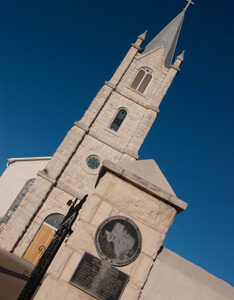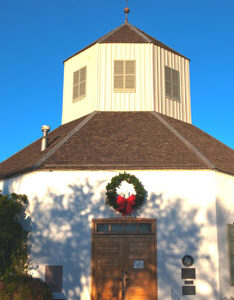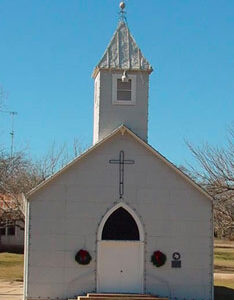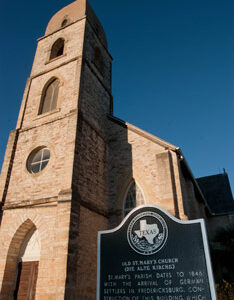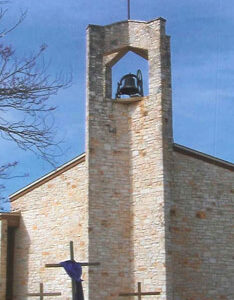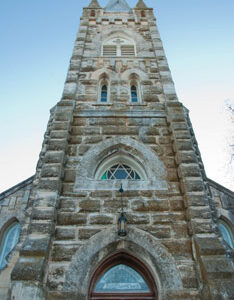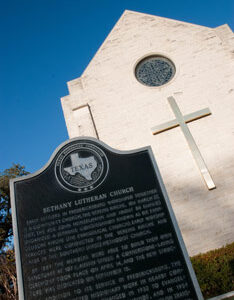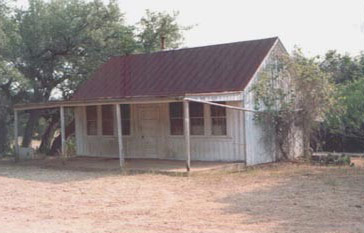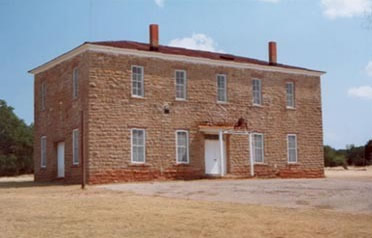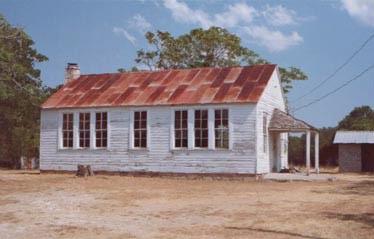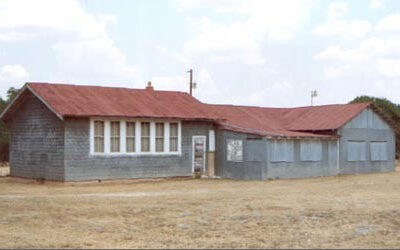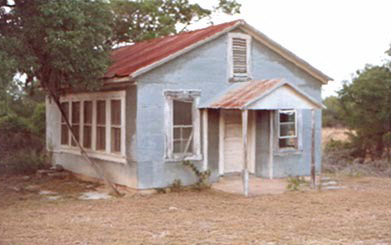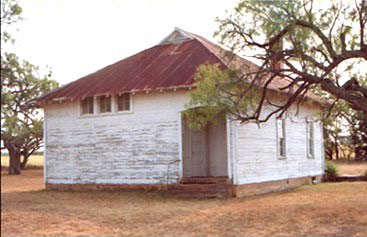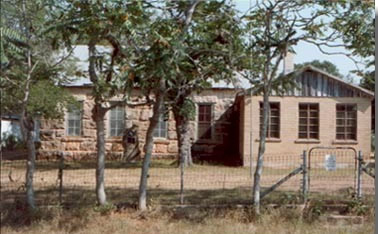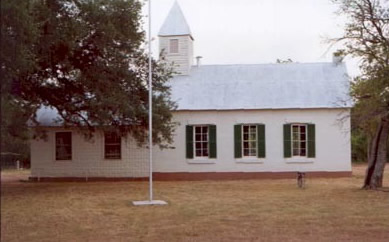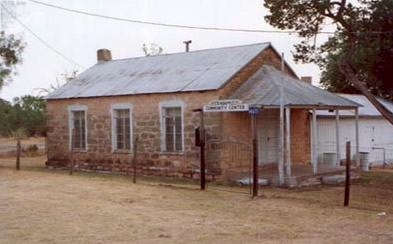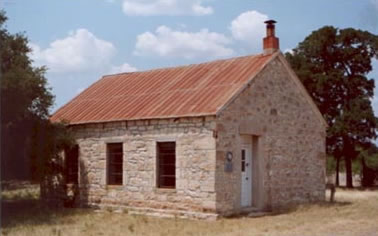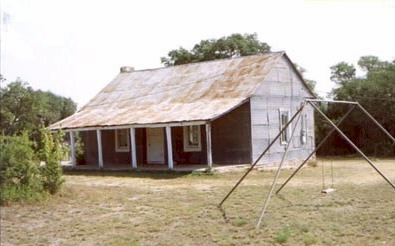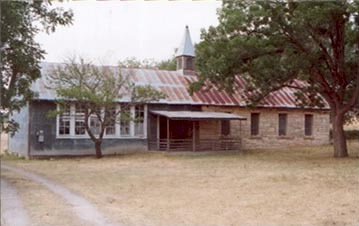
History
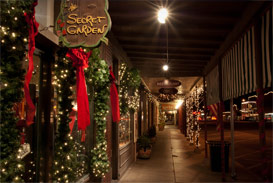 In April 1846, Baron Otfried Von Meuseback left New Braunfels leading a group of about 120 men, women and children headed for the present site of Fredericksburg, Texas. Transportation proved to be a problem, as the United States and Mexico were at war, and all the teamsters were employed by the government. Wagons were hard to come by, and some pioneers traveled in two-wheeled oxen carts, some on foot.
In April 1846, Baron Otfried Von Meuseback left New Braunfels leading a group of about 120 men, women and children headed for the present site of Fredericksburg, Texas. Transportation proved to be a problem, as the United States and Mexico were at war, and all the teamsters were employed by the government. Wagons were hard to come by, and some pioneers traveled in two-wheeled oxen carts, some on foot.
On May 8, 1846, the German pioneers reached their destination land; a small town called Fredericksburg was founded at a point 4 miles north of the Pedernales River, later called Baron Creek.
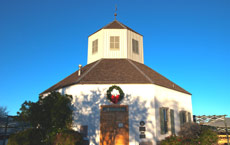 Each family received a two-acre tract of land and a town lot. The first buildings were of logs and hides, soon the settlers of Fredericksburg built sturdy permanent structures of native stone and timber. Realizing that many needs of the community would be brought by freight wagons, they planned their streets accordingly. Each street was made wide enough to allow the freight wagon and a team of oxen to make a “U” turn.
Each family received a two-acre tract of land and a town lot. The first buildings were of logs and hides, soon the settlers of Fredericksburg built sturdy permanent structures of native stone and timber. Realizing that many needs of the community would be brought by freight wagons, they planned their streets accordingly. Each street was made wide enough to allow the freight wagon and a team of oxen to make a “U” turn.
Determined to let the world know Fredericksburg was a friendly town, the early settlers named their streets to signify that fact.
While traveling west from the center of town on Main Street, the cross streets are Crockett, Orange, Milam, Edison, Bowie, Acorn, Cherry and Kay; the first letter from each street spells “COME BACK”. Traveling east from center of town, the cross streets are Adams, Llano, Lincoln, Washington, Elk, Lee, Columbus, Olive, Mesquite and Eagle. The message of course reads “ALL WELCOME”.
Important in the settlement of the town and county was the establishment of the many churches and schools, many of which still stand today.
Historic Churches
-
In 1852, members who withdrew from the Vereins church formed the Zion Lutheran congregation. The congregation consisted of six families. On January 13, 1853, they... Continue Reading
-
Vereins Kirche Church
The Old Society Church On May 8, 1846, the so-called Society of German Noblemen established the German colony of Fredericksburg. When the site for the... Continue Reading -
St. Paul’s Evangelical Lutheran Church
The congregation was organized in the year of 1884. Mr. Conrad Herbort donated five acres of land to serve as the site for the church,... Continue Reading -
St. Mary’s Catholic Church
St. Mary’s history goes back to the city’s founding. In 1847, the Catholics who were among the first settlers worshipped in the Vereins Kirche (Community... Continue Reading -
United Methodist Church
Fredericksburg United Methodist Church was originally two branches, the Methodist Episcopal Church South and the Methodist Episcopal Church North. The two branches later merged to... Continue Reading -
Holy Ghost Lutheran Church
On July 27, 1887, Pastor DeGeller began his ministry as pastor of the congregation. During this time, Mr. H. Ochs, Sr. began the recording of... Continue Reading -
Bethany Lutheran Church
Bethany Lutheran Church (The Evangelical Protestant Church), formally known as the Evangelical-Catholic Church, was organized on March 27, 1887 when, under the leadership of Pastor... Continue Reading
Historic Schools
-
Wrede School
A man by the name of Friedrich von Wrede owned the land on which this school was built. Some of the early organizers were Julius... Continue Reading -
Willow City School
The Willow City School District #804 is in the northeastern part of Gillespie County, with its northern border extending to the Llano County line. English... Continue Reading -
Rheingold School
The Rheingold School #22 was begun in 1873, when the need for a school for the area children was realized. William Gold donated the two... Continue Reading -
Pecan Creek School
In 1899, the Bernhard Friedrich house, which was bought for $250, became the first school. This first school was private. The Pecan Creek School #29... Continue Reading -
Nebgen School
Nebgen School District #33 was located near the Gillespie and Blanco County boundary. In 1881, the first school, of logs, was built on land donated... Continue Reading -
Meusebach School
The first building for the Meusebach Creek School #11 was located near Meusebach Creek on the Fritz Lochte property. It was a square cabin with... Continue Reading -
Luckenbach School
On July 22, 1855, two acres of land along Grape Creek was purchased from Peter Pehl for $4. After the land was acquired, the men... Continue Reading -
Lower South Grape Creek School
In 1871, Luckenbach trustees voted to buy 1-1/3 acres on the west bank of South Grape Creek from Juliane Wehmeyer for $50. Until 1871, the... Continue Reading -
Crabapple School
German immigrants who came to Fredericksburg in the 1840’s and later, settled in the Crabapple area. Many parents were eager to donate land so a... Continue Reading -
Cherry Spring School
Classes for the children of German immigrants in the Cherry Spring community were held in homes until 1885. At that time, a 31′ x 23′... Continue Reading -
Cave Creek School
In 1865, John Ebert deeded eight acres for a school. Organized in 1870, the school was named Cave Creek, for a nearby creek which had... Continue Reading -
Albert School
In 1891, one acre of land on Williams Creek was bought for $1. A one-room log cabin was built and School District #38 was established.... Continue Reading
Sunday Houses
Sunday houses were small second dwellings maintained near a church as a weekend place of residence. They became popular in the late 1800s among farmers and ranchers who lived in areas too remote to permit commuting to services. The families owning such houses normally left their farms and ranches Saturday morning, journeyed to town, took care of shopping and business, attended an evening dance or party, and spent the night in the Sunday house. On Sunday they attended church in the morning and either returned home in the afternoon or attended Sunday school in the afternoon, and then spent a second night in town. Sunday houses were also used when a member of the family needed to stay in town to conduct business or receive medical attention. Some Sunday houses became the residences of retired ranchers when their land was turned over to their sons. Although in Texas Sunday houses were almost exclusively confined to Germans in the Hill Country, particularly Gillespie County, the phenomenon was not unique to Texas. Similar houses were used in the 1660s in Middlebury, Connecticut, and a counterpart to the Sunday house exists in the Pennsylvania Dutch country. Sunday houses were small, usually having only two rooms, and often made of frame rather than rock. Some of them had 1½ stories, with a gabled roof to form an attic, usually reached from an outside stairway, that served as the children’s sleeping quarters. The roof was pitched at a little less than forty-five degrees and covered with handmade cypress shingles. Some of the houses were embellished with millwork in the door and window casings and had ornamented stair rails, newels, and transoms. The ground floor usually had a single room with a lean-to kitchen behind and a slant-roofed porch in front. Occasionally a second room was added. The houses were furnished for light housekeeping with a fireplace to provide heat and a place to prepare meals. There was no running water.
Sunday houses originated for several reasons. Since there were few rural churches, a weekend town residence made it easier to attend services. And the social contact of a weekend in town provided compensation for the isolation of rural life. Such German settlements as Fredericksburg, New Braunfels, and Castroville were laid out as farm villages, and it was expected that farmers would build their houses in town and journey each day to outlying fields and pastures, in the European manner. To that end, farmers were granted town lots. Soon after initial colonization, however, Germans moved out to settle in isolated farmsteads on their land, like their Anglo-American counterparts. The Catholic and Lutheran churches, however, did not soon follow their parishioners into the countryside, but stayed instead in the county seats. Many devout Germans therefore erected Sunday houses, often on the town lots originally intended for their homes. Certain streets in Fredericksburg were lined with Sunday houses, and a surviving cluster is found on West San Antonio Street, near St. Mary’s Catholic Church. Others still stand on West Main and South Milam streets. Clusters of Sunday houses also developed around St. Paul Lutheran Church in Cave Creek and in the village of Harper. Although the custom began to die in the 1920s with the advent of improved roads and motor vehicles, it experienced a resurgence in the late 1970s. Surviving Sunday houses sell at premium prices as restoration and historical significance have become more important in the tourist business.
BIBLIOGRAPHY:
Elise Kowert, Old Homes and Buildings of Fredericksburg (Fredericksburg, Texas: Fredericksburg Publishing, 1977). Esther Mueller, “Sunday Houses of Fredericksburg,” Texas Monthly, April 1930.
Terry G. Jordan
What
Citation:
The following, adapted from the Chicago Manual of Style, 15th edition, is the preferred citation for this article.
Terry G. Jordan, “SUNDAY HOUSES,” Handbook of Texas Online (http://www.tshaonline.org/handbook/online/articles/cfs01), accessed November 29, 2011. Published by the Texas State Historical Association.

